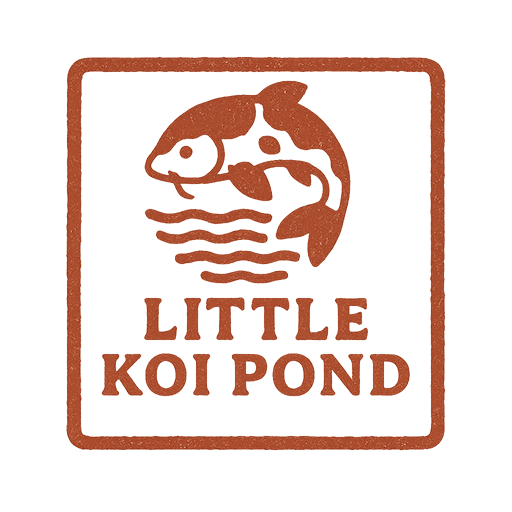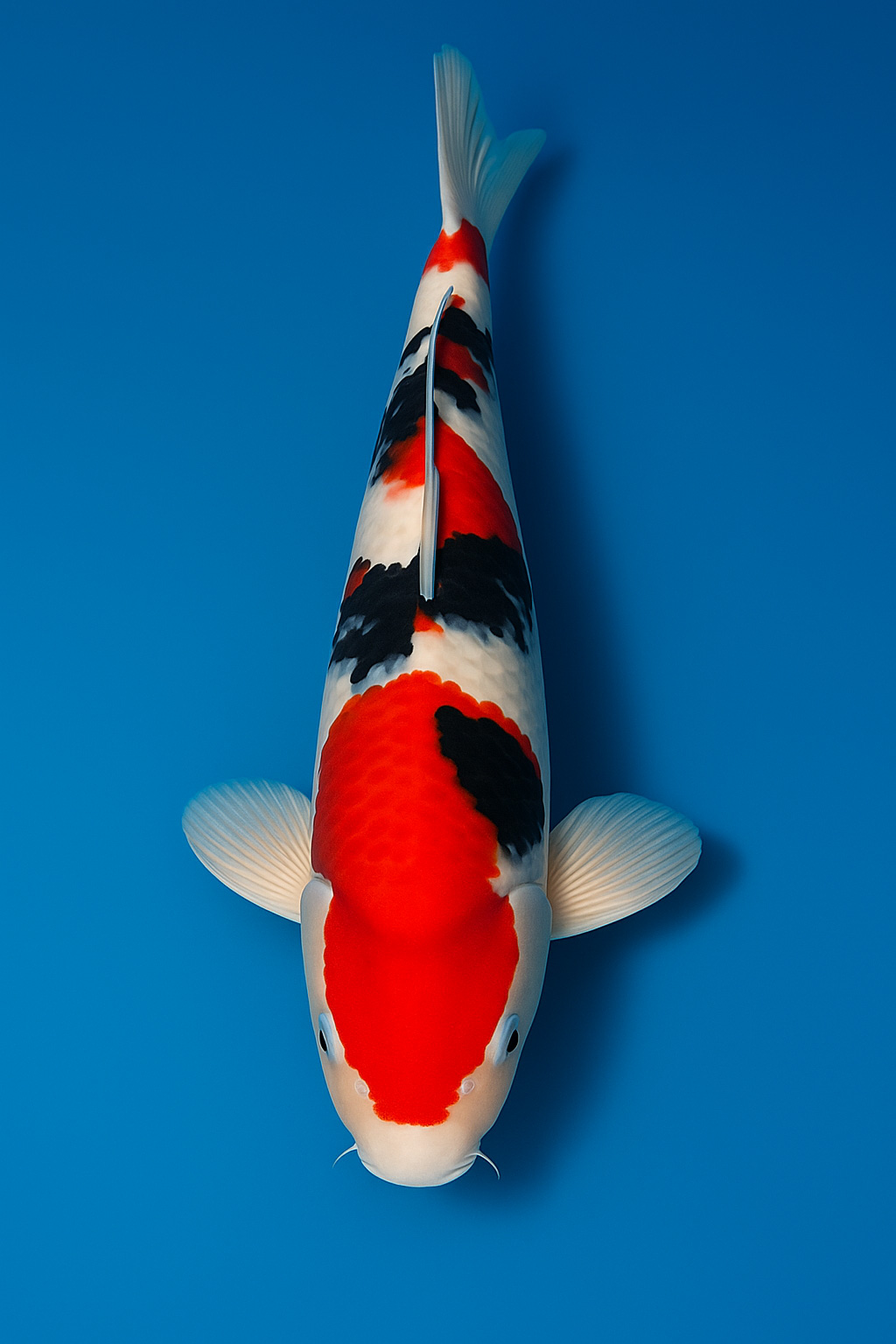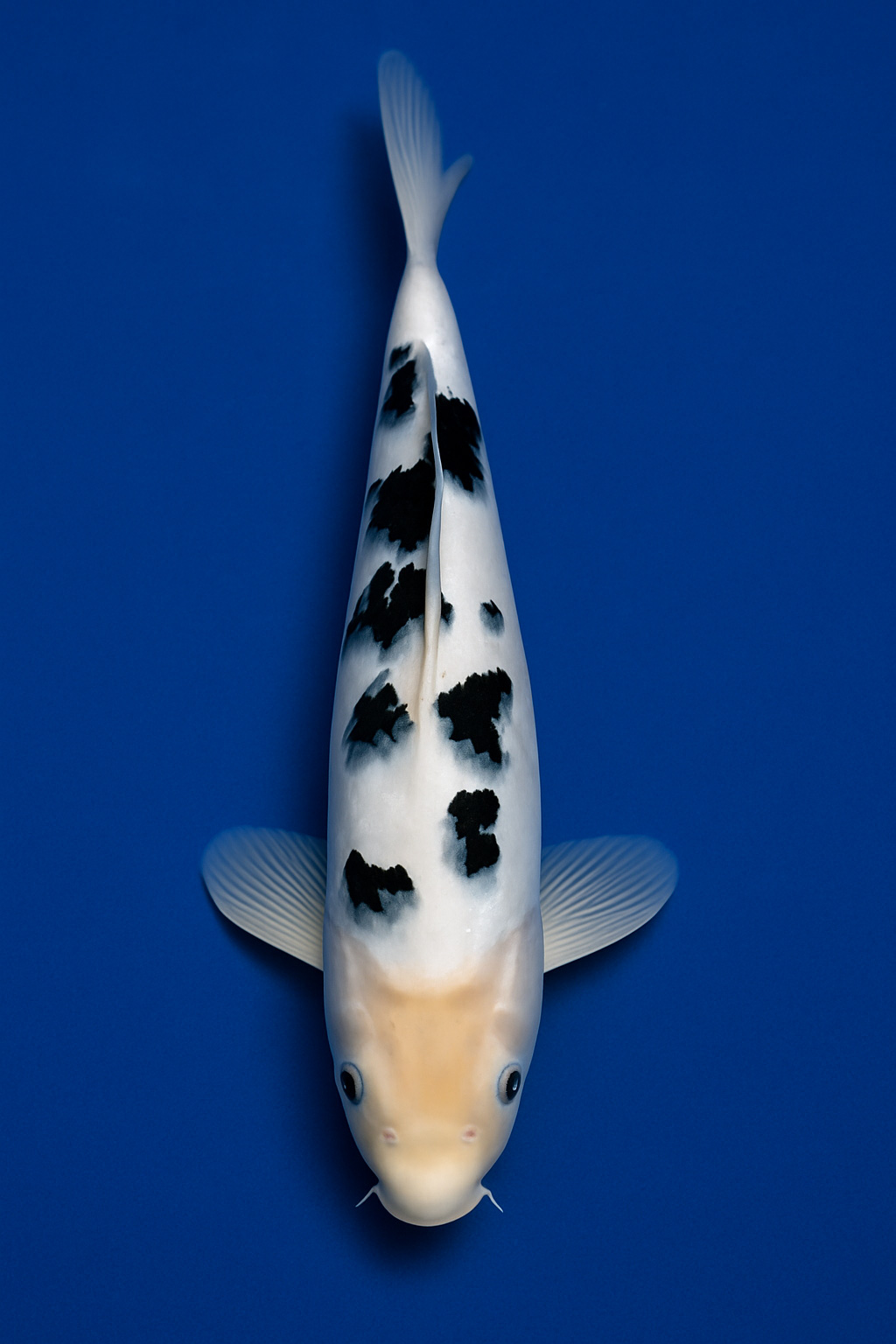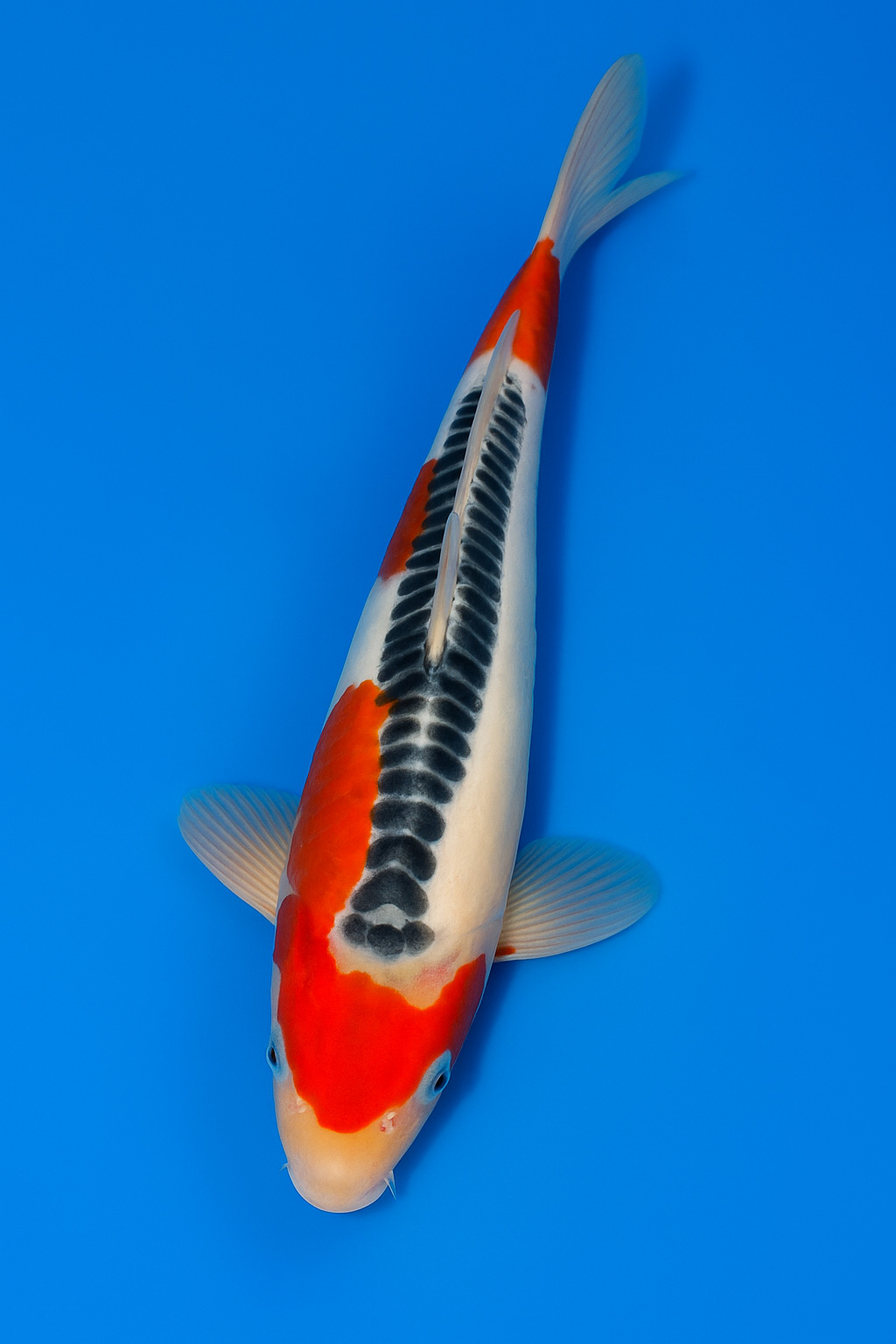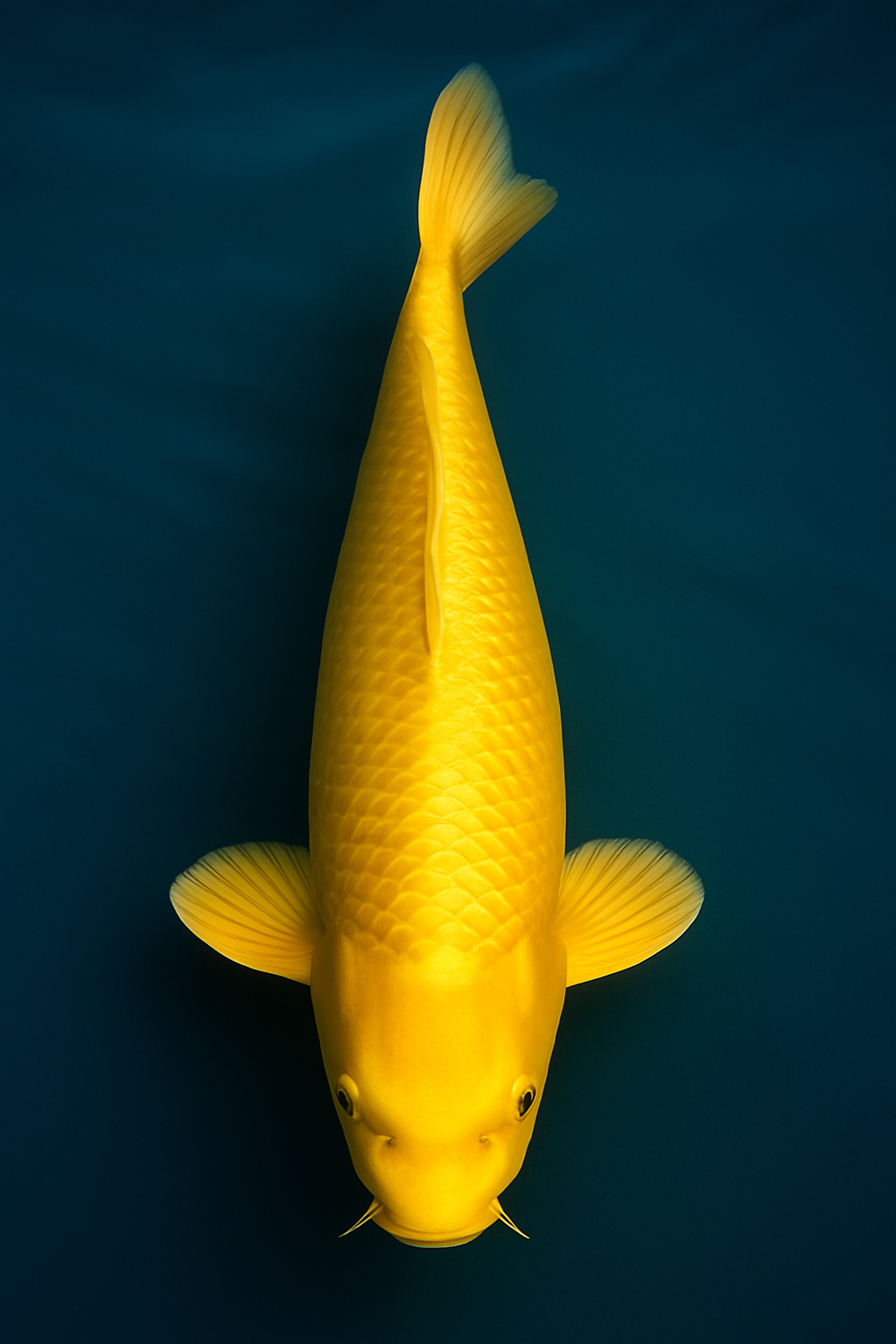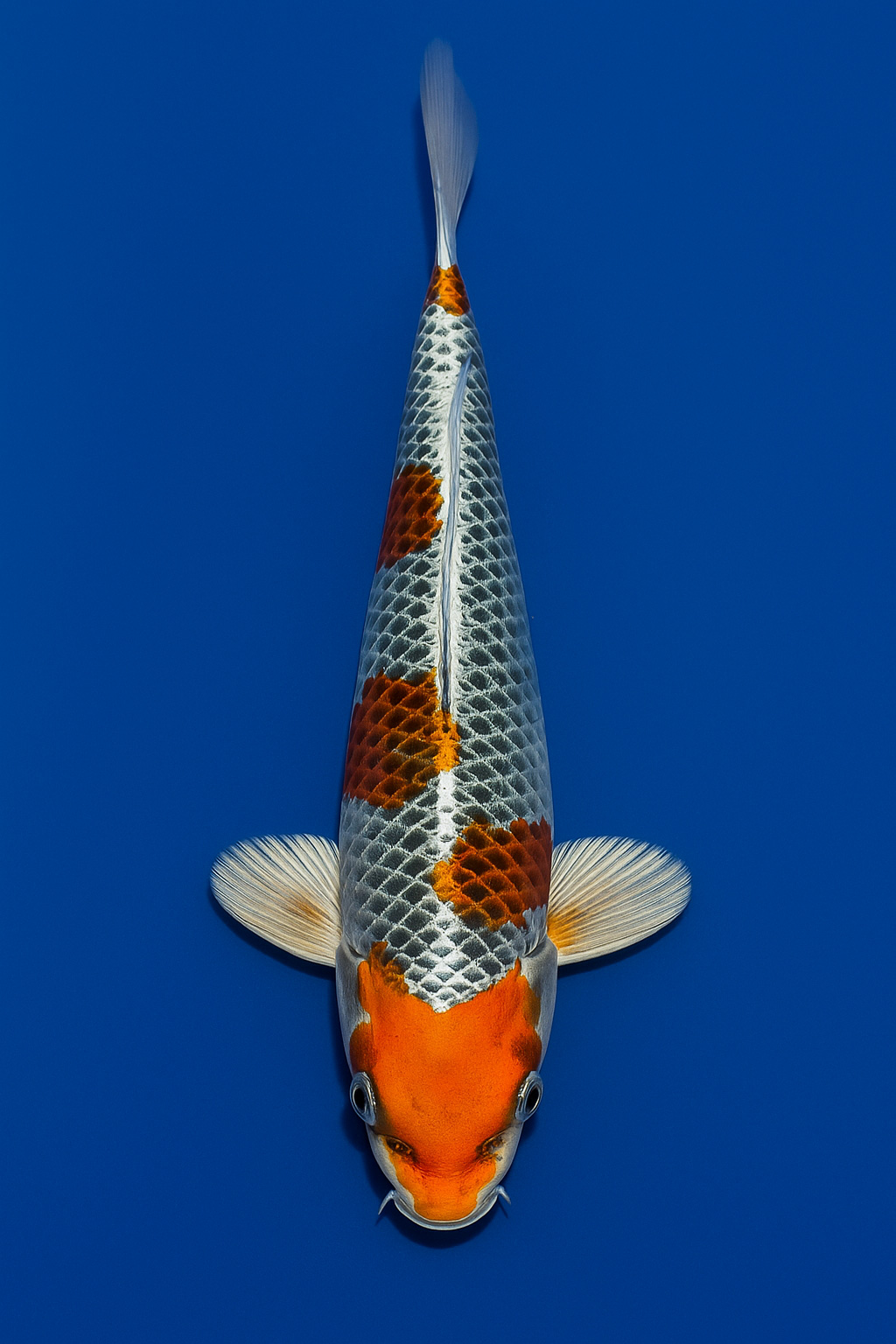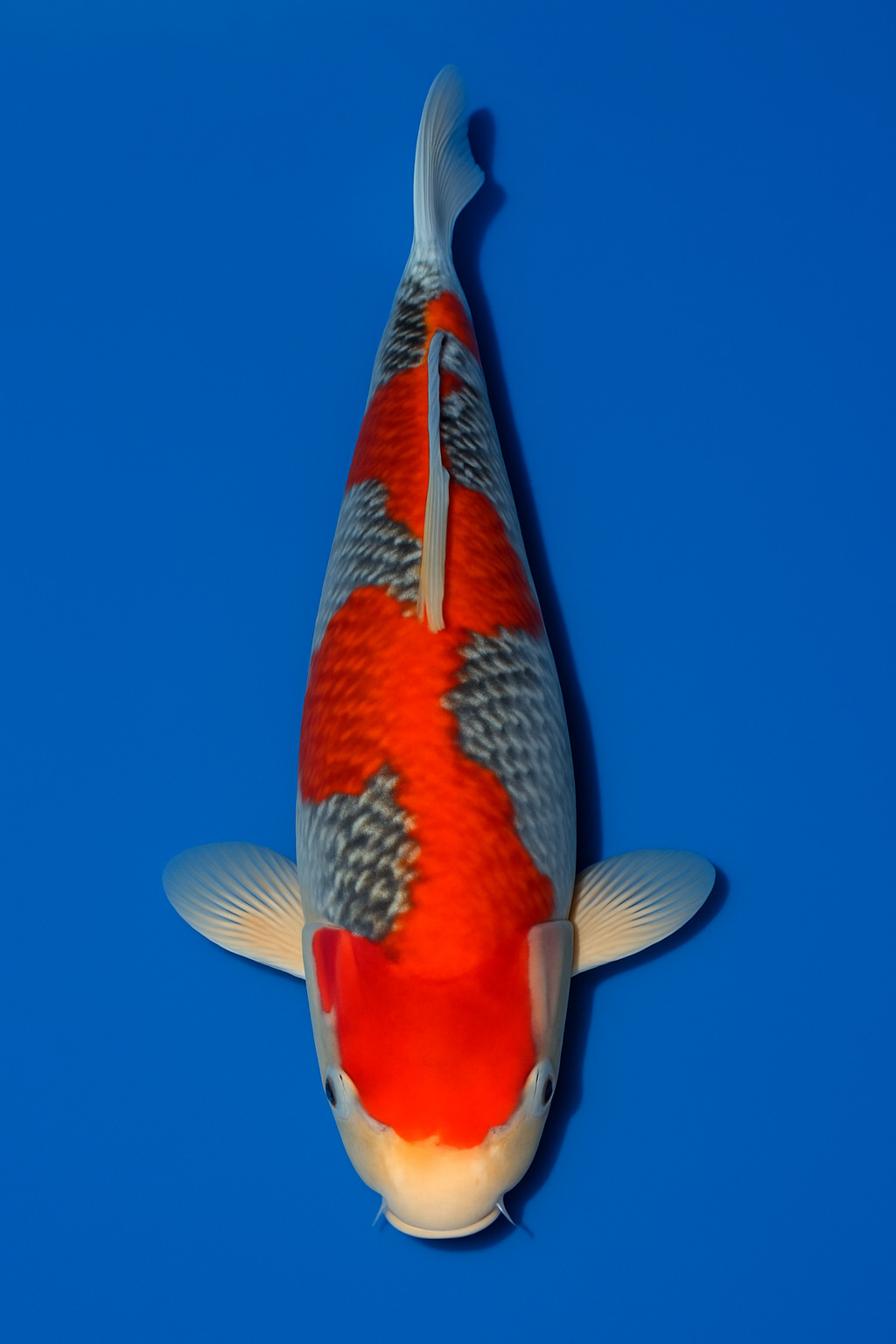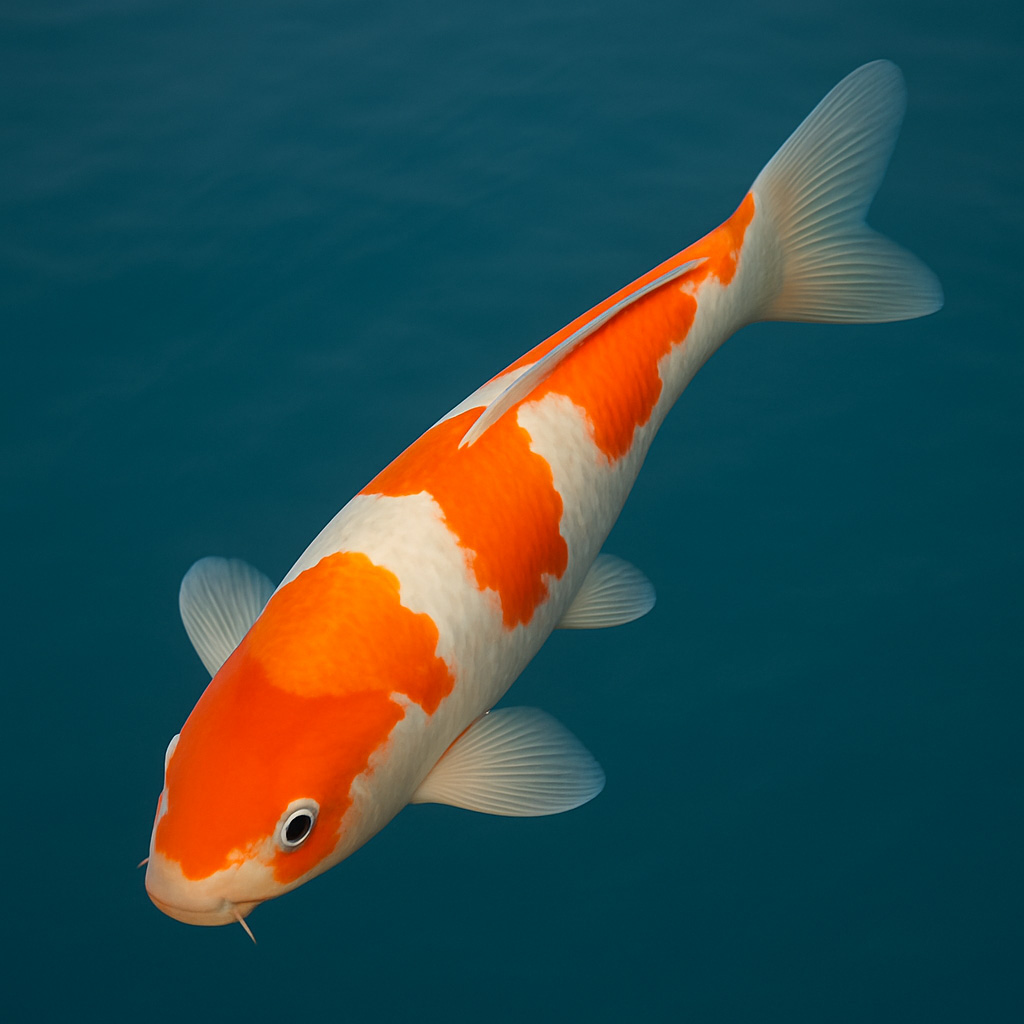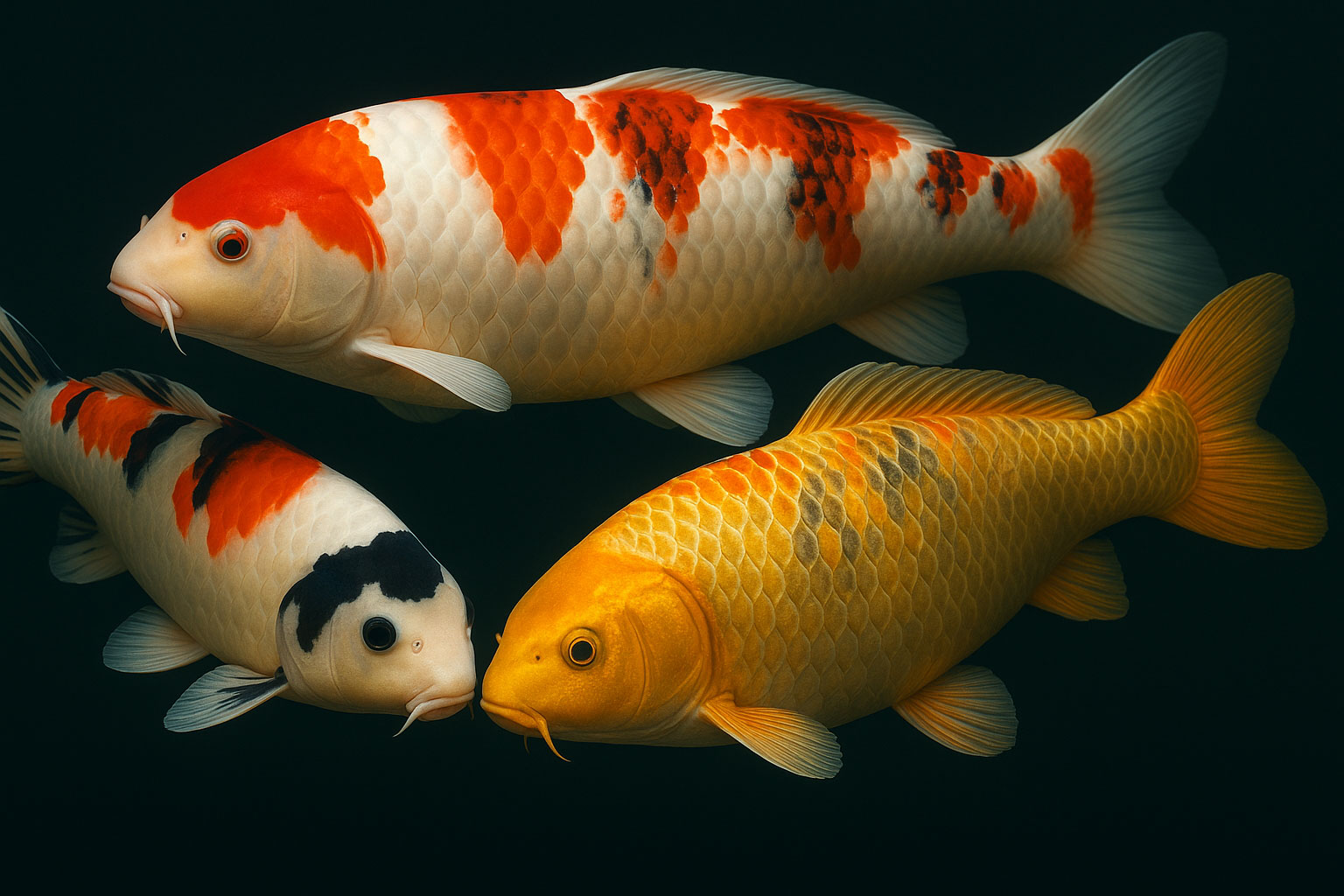
Popular Breeds and Types of Koi Fish
Koi fish (Cyprinus carpio), have been selectively bred for centuries to develop a wide range of colors, patterns, and scale types. Originating in Japan, koi breeding began in earnest in the 19th century, leading to the creation of dozens of distinct varieties.
There are over 100 different varieties of koi to date, each with its own unique characteristics.
This guide breaks down how koi are classified, highlights the most popular breeds, and shares tips to help you identify and appreciate the different types of koi fish.
Koi Classifications
Koi fish are primarily classified based on color, pattern, and scale type. There are three main categories that hobbyists and breeders use:
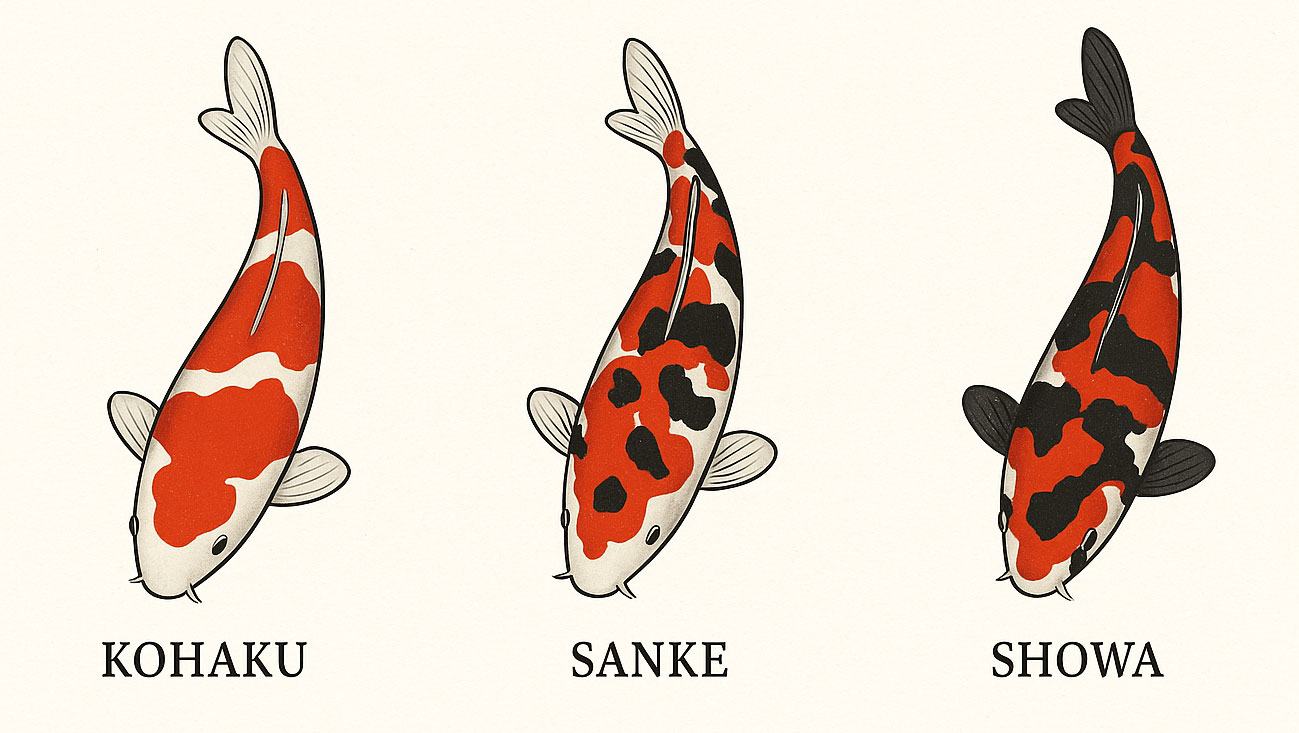
Go Sanke:
“Go SAHN-keh”
The most famous group, which includes Kohaku, Sanke, and Showa.
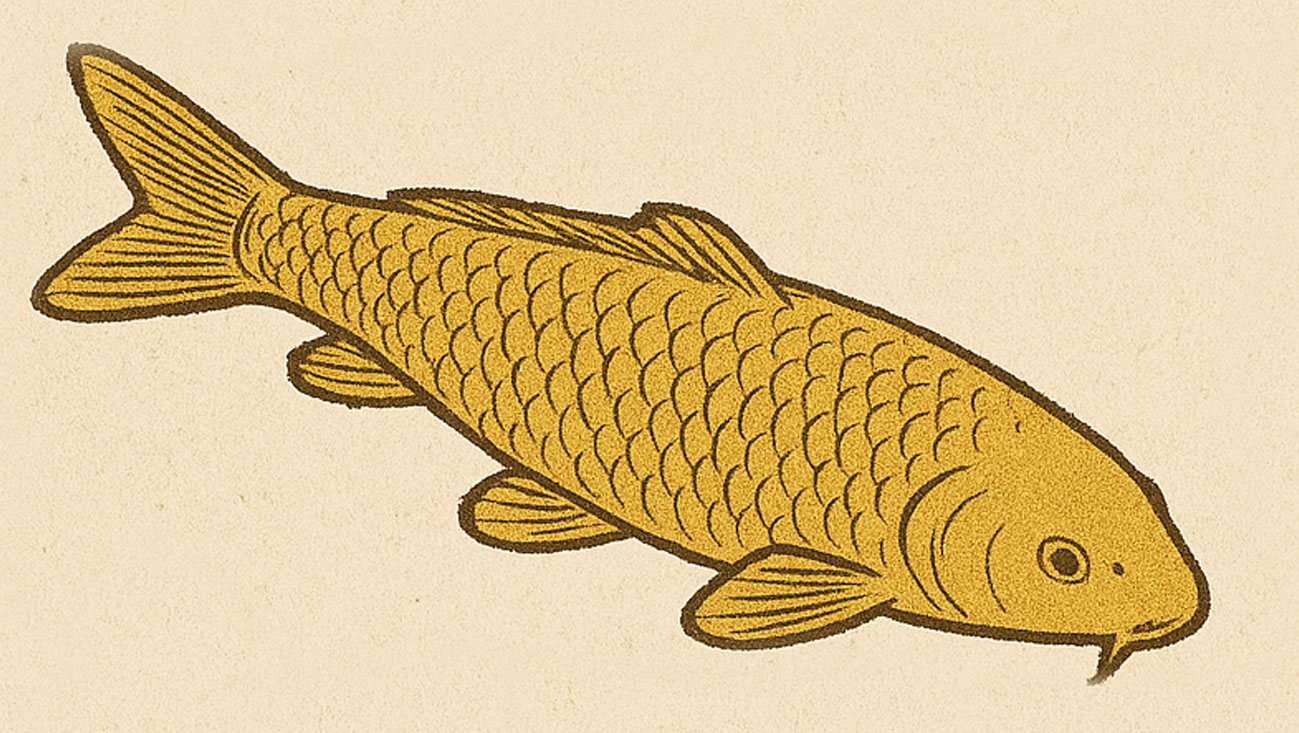
Hikarimono:
“Hee-kah-ree-moh-noh”
Metallic-colored koi, typically with a single solid hue.
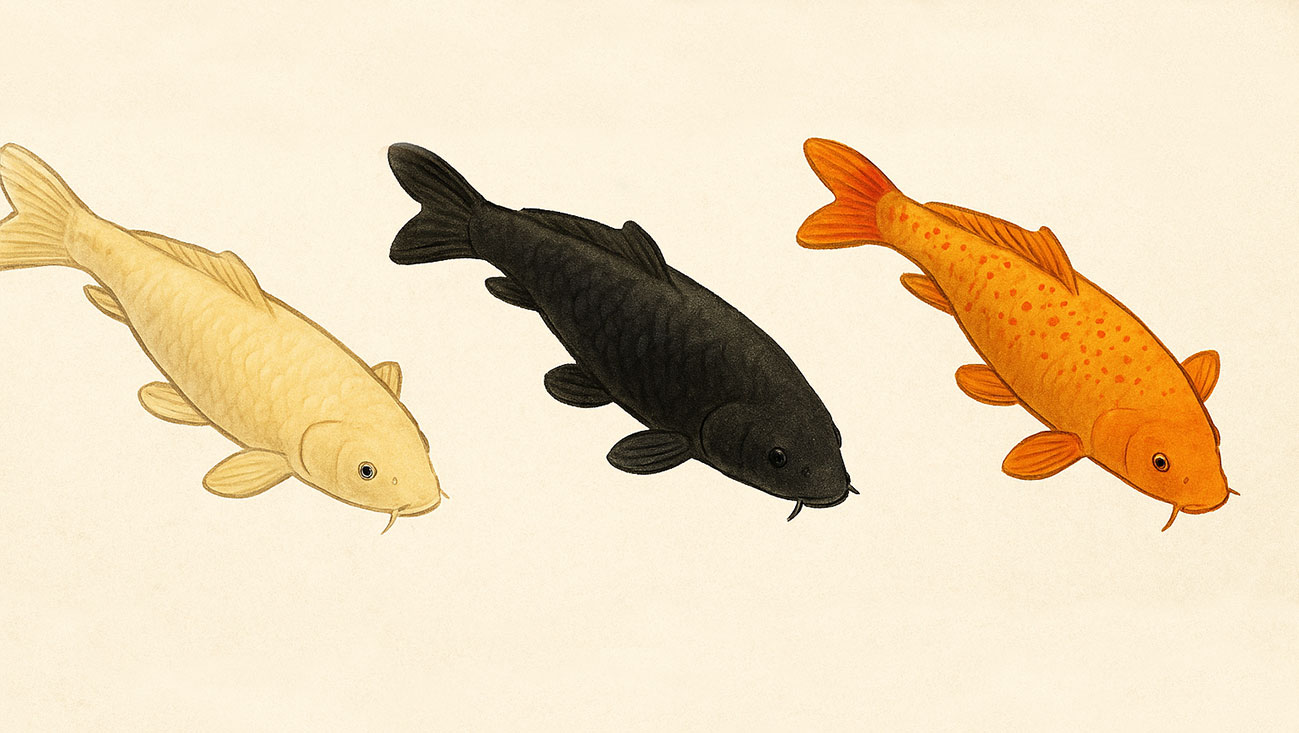
Kawarimono:
“Kah-wah-ree-moh-noh”
A catch-all category for koi that don’t fit into other classifications, including unique or rare types.
Within these categories are many sub-varieties and hybrids, each bred for distinctive traits like scale patterns, color placement, and body form. Understanding these classifications can help you identify the types of koi you’ll see in ponds and in fish stores.
Most Popular Koi Fish Breeds
With dozens of koi breeds available, some have become favorites among enthusiasts for their beauty, symbolism, and ease of care. Below are the most popular koi breeds you’ll encounter.
Note: We’ve ranked each kind of koi with a rarity, with 1 being the least rare, and 5 being the most rare.
Kohaku
“Koh-hah-koo”
A white-bodied koi with red (hi) markings. Kohaku are often seen as the foundation of all koi breeding, and their simplicity is cherished for its elegance.
- Common Characteristics: Clean white skin with deep, uniform red patterns.
- Origins: One of the original koi breeds developed in Japan in the early 1800s.
- Rarity: 2
Easiest Way to Identify: Look for a pure white body with large red markings, often evenly spaced.
Taisho Sanke (Sanke)
“Tie-show Sahn-keh”
Similar to Kohaku but with additional black (sumi) spots. Sanke are known for their crisp, clean appearance and are often used to demonstrate ideal pattern placement in koi competitions.
- Common Characteristics: White base, red patches, and smaller black spots.
- Origins: Developed during the Taisho era in early 20th century Japan.
- Rarity: 2
- Easiest Way to Identify: Look for a Kohaku-like pattern with scattered black spots that never appear on the head.
Taisho Sanke (Sanke)
“Tie-show Sahn-keh”
Similar to Kohaku but with additional black (sumi) spots. Sanke are known for their crisp, clean appearance and are often used to demonstrate ideal pattern placement in koi competitions.
- Common Characteristics: White base, red patches, and smaller black spots.
- Origins: Developed during the Taisho era in early 20th century Japan.
- Rarity: 2
- Easiest Way to Identify: Look for a Kohaku-like pattern with scattered black spots that never appear on the head.
Showa Sanshoku (Showa)
“Shoh-wah Sahn-show-koo”
A black koi with red and white patterns. Showa are admired for their dynamic, dramatic contrasts and the way their black base can appear to wrap around their body like ink.
- Common Characteristics: Black base with bold red and white patterns over the body and head.
- Origins: Originated in the 1920s in Japan.
- Rarity: 3
- Easiest Way to Identify: Unlike Sanke, Showa has black on the head and deeper, broader sumi patterns.
Utsurimono
“Oot-soo-ree-moh-noh”
Black koi with one other color: white, red, or yellow. This group—Shiro, Hi, and Ki Utsuri—is celebrated for bold, symmetrical markings that make them visually striking in any pond.
- Common Characteristics: Heavy black base color with contrasting overlays.
- Origins: Rooted in the early Japanese koi breeding traditions.
- Rarity: 3
- Easiest Way to Identify: Look for symmetrical color placement over a deep black base.
Utsurimono
“Oot-soo-ree-moh-noh”
Black koi with one other color: white, red, or yellow. This group—Shiro, Hi, and Ki Utsuri—is celebrated for bold, symmetrical markings that make them visually striking in any pond.
- Common Characteristics: Heavy black base color with contrasting overlays.
- Origins: Rooted in the early Japanese koi breeding traditions.
- Rarity: 3
- Easiest Way to Identify: Look for symmetrical color placement over a deep black base.
Bekko
“Beh-koh”
White, red, or yellow koi with black markings. Bekko are often confused with Sanke but are generally simpler, making them a good stepping stone for beginners in pattern recognition.
- Common Characteristics: Clean base color with sparse sumi spots.
- Origins: Thought to derive from the Taisho Sanke lineage.
- Rarity: 2
- Easiest Way to Identify: Simpler pattern than Sanke, with no black on the head.
Asagi
“Oot-soo-ree-moh-noh”
One of the oldest koi types, with blue-grey scales and red below the lateral line. Asagi are known for their peaceful, refined appearance and are often a collector’s favorite for their subtle beauty.
- Common Characteristics: Net-like scale pattern, red cheeks and fins.
- Origins: Traced back to wild carp mutations in the 19th century.
- Rarity: 4
- Easiest Way to Identify: Blue-grey body with reddish-orange on the bottom half.
Asagi
“Oot-soo-ree-moh-noh”
One of the oldest koi types, with blue-grey scales and red below the lateral line. Asagi are known for their peaceful, refined appearance and are often a collector’s favorite for their subtle beauty.
- Common Characteristics: Net-like scale pattern, red cheeks and fins.
- Origins: Traced back to wild carp mutations in the 19th century.
- Rarity: 4
- Easiest Way to Identify: Blue-grey body with reddish-orange on the bottom half.
Shusui
“Shoo-soo-ee”
A scaleless version of Asagi with similar coloration. Shusui offer a more modern twist on the Asagi aesthetic, often preferred by those who appreciate minimalist patterns.
- Common Characteristics: Clear, scaleless sides and a blue dorsal line.
- Origins: Developed in the early 20th century as a Doitsu variant of Asagi.
- Rarity: 4
- Easiest Way to Identify: Look for the absence of scales on the sides and a clean, straight line of dorsal scales.
Ogon
“Oh-gon”
Metallic koi with a solid color—usually gold or platinum. Ogon are prized for their brilliance and are often the “showstoppers” in a pond due to their eye-catching shimmer.
- Common Characteristics: Shimmering single-color body.
- Origins: Bred for their brilliant luster and uniform appearance.
- Rarity: 2
- Easiest Way to Identify: Monochrome metallic body with a striking shine.
Ogon
“Oh-gon”
Metallic koi with a solid color—usually gold or platinum. Ogon are prized for their brilliance and are often the “showstoppers” in a pond due to their eye-catching shimmer.
- Common Characteristics: Shimmering single-color body.
- Origins: Bred for their brilliant luster and uniform appearance.
- Rarity: 2
- Easiest Way to Identify: Monochrome metallic body with a striking shine.
Kujaku
“Koo-jah-koo”
A metallic koi with reticulated scales and white, red, and black colors. Kujaku are admired for their complex blend of pattern and sheen, often resembling a peacock’s plumage in koi form.
- Common Characteristics: Bright metallic sheen with net-like pattern over color blocks.
- Origins: A cross between Hariwake and Matsuba.
- Rarity: 3
- Easiest Way to Identify: Look for metallic luster and a pinecone pattern over white and red.
Goshiki
“Goh-shee-kee”
A koi with a complex five-color pattern. Goshiki are highly sought after for their dramatic contrast and unusual combination of colors, making them stand out even among a crowded pond.
- Common Characteristics: Base of blue-black with red, white, and darker overtones.
- Origins: A mix of Sanke and Asagi lines.
- Rarity: 4
- Easiest Way to Identify: Blue-grey background with red patterns and black reticulation.
Goshiki
“Goh-shee-kee”
A koi with a complex five-color pattern. Goshiki are highly sought after for their dramatic contrast and unusual combination of colors, making them stand out even among a crowded pond.
- Common Characteristics: Base of blue-black with red, white, and darker overtones.
- Origins: A mix of Sanke and Asagi lines.
- Rarity: 4
- Easiest Way to Identify: Blue-grey background with red patterns and black reticulation.
Doitsu Koi
“Doy-tsu Koy”
Koi that are mostly or completely scaleless. Doitsu koi appeal to many enthusiasts for their smooth, leather-like appearance and crisp pattern clarity.
- Common Characteristics: Smooth skin or a single row of scales.
- Origins: Bred from German mirror carp and traditional Japanese koi.
- Rarity: 3
- Easiest Way to Identify: Absence of scales except for a line along the dorsal fin.
Easiest Way to Identify Koi Carp
Identifying koi varieties can seem overwhelming, but a few key traits make it easier. Here’s what to look for—and how each clue connects to koi classification:
- Base Color: Note the primary color (white, black, blue, red, or yellow). A solid white or red base might place the koi in the Go Sanke group, while blue or yellow tones often indicate Asagi, Shusui, or Hikarimono types.
- Pattern Layout: Observe where colors appear—are they on the head, back, or symmetrical? Large red patches on a white body suggest Kohaku (Go Sanke), while random black marks over a metallic base could mean the koi is a Budo Goromo or from the Kawarimono class.
- Scale Type: Are the scales normal, net-like, or absent? Net-like scales are typical in Asagi and Goshiki koi, while scaleless koi belong to the Doitsu group, often spanning multiple classifications like Doitsu Showa or Doitsu Kujaku.
- Sheen: Metallic koi have a visible shine under light. A metallic finish classifies the koi within the Hikarimono group, which includes breeds like Ogon, Kujaku, and Platinum koi.
- Head Color: In breeds like Sanke and Showa, the presence or absence of black on the head is a distinguishing feature. No black on the head suggests a Sanke, while a bold black pattern on the head points to Showa—both members of the Go Sanke group.
- Body Shape: More refined koi have thicker, torpedo-shaped bodies—especially in older, well-bred specimens. While body shape doesn’t determine classification, it often reflects the quality of breeding within the major groups like Go Sanke and Hikarimono.
What Makes a Koi Fish Rare?
- Unusual Color Combinations: Colors like blue, lavender, or true black are harder to breed consistently.
- Perfect Pattern Symmetry: Balanced patterns that meet strict aesthetic criteria are uncommon.
- Scaleless or Metallic Finishes: These traits can reduce the gene pool, making them harder to produce.
- Lineage: Koi from reputable breeders or champion bloodlines are often more rare and valuable.
- Size: Large koi over 30 inches with ideal coloration are much less common and highly prized.
These factors explain why some koi fetch thousands—or even hundreds of thousands—of dollars at auction.
Frequently Asked Questions
What is the best koi fish breed for beginners?
Kohaku is often recommended due to its hardy nature and simple color pattern, making it easier to care for and identify.
What is the rarest koi color?
True blue koi, particularly in the Asagi and Goshiki lines, are among the rarest due to the difficulty in maintaining blue hues through generations.
What is the most sought after koi breed?
Showa Sanshoku, when bred with high contrast and balance, is considered one of the most desirable due to its dramatic and intricate color pattern.
References
- https://www.kerutokoi.com/post/koi-varieties-the-ultimate-guide
- https://www.completekoi.com/blogs/news/koi-carp-the-ultimate-guide
- https://www.imountaintree.com/diversity-under-the-surface-the-11-essential-types-of-koi-fish-for-every-enthusiast/
- https://www.aquascapeinc.com/water-gardening/13-essential-koi-varieties
